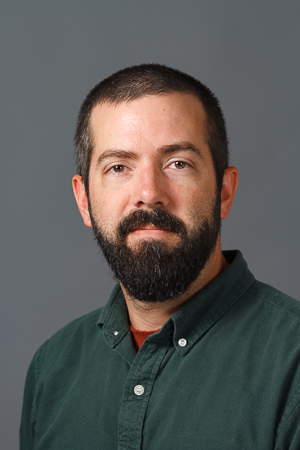Faculty Profile
Jim Sias
Associate Professor of Philosophy (2013)Contact Information
East College Room 206
717-245-1217
http://jamessias.com
Bio
My research tends to focus on either (a) questions about the foundations of ethics, or (b) questions about the nature of moral cognition. Lately, I've been spending a lot of time thinking about how moral "outliers" (i.e., people who think and behave in ways radically different from most) recognize and respond to the moral features of the world. In my first book, The Meaning of Evil (Palgrave Macmillan, 2016), I examine the psychologies of people commonly regarded as evil, and on this basis, argue that what makes a person evil is the particular way in which he sees, or regards, others in the moral community. My current research focuses primarily on the significance of mental illness in and to the moral community, with a special emphasis (for now) on schizophrenia and psychosis.
Education
- B.S., Point University, 2005
- M.A., Georgia State University, 2007
- M.A., University of North Carolina-Chapel Hill, 2009
- Ph.D., 2013
2025-2026 Academic Year
Fall 2025
PHIL 102 Introduction to Ethics
An introduction to the philosophical study of morality, focusing on concepts of right and wrong, virtue and vice, and wellbeing. This course provides students the opportunity to hone their ethical reasoning skills by critically examining how some of history’s most influential philosophers thought about issues in morality. Students will also develop more general skills, such as evaluating philosophical arguments, and expressing and defending their own ideas in writing.
ARTH 252 Philosophy of Art
The discipline of aesthetics is primarily concerned with philosophical questions about art and beauty. This course will examine classic and contemporary Western discussions of such questions as, What is art? How can we determine what a work of art means? Are beauty and other aesthetic qualities subjective or objective? How should the quality of a work of art be assessed? Is there a general way to describe the creative process? What are the driving forces in the unfolding of art history? We will encounter such giants of the Western intellectual tradition as Plato, Aristotle, Hume, Kant, and Hegel, and also such contemporary figures as Arthur Danto, Richard Wollheim, and Kendall Walton.
Prerequisites: one previous course in art history, or permission of the instructor. This course is cross-listed as PHIL 252.
PHIL 252 Philosophy of Art
The discipline of aesthetics is primarily concerned with philosophical questions about art and beauty. This course will examine classic and contemporary Western discussions of such questions as, What is art? How can we determine what a work of art means? Are beauty and other aesthetic qualities subjective or objective? How should the quality of a work of art be assessed? Is there a general way to describe the creative process? What are the driving forces in the unfolding of art history? We will encounter such giants of the Western intellectual tradition as Plato, Aristotle, Hume, Kant, and Hegel, and also such contemporary figures as Arthur Danto, Richard Wollheim, and Kendall Walton. This course is cross-listed as ARTH 252.
PHIL 500 Independent Study
Spring 2026
PHIL 102 Introduction to Ethics
An introduction to the philosophical study of morality, focusing on concepts of right and wrong, virtue and vice, and wellbeing. This course provides students the opportunity to hone their ethical reasoning skills by critically examining how some of history’s most influential philosophers thought about issues in morality. Students will also develop more general skills, such as evaluating philosophical arguments, and expressing and defending their own ideas in writing.
PHIL 261 Philosophy of Humor
Examination of specific problem, author, text, or movement.Prerequisites: Two prior courses in philosophy.
PHIL 302 Ethical Theory
This seminar will explore major issues or texts in classical or contemporary moral philosophy. Prerequisites: three prior courses in philosophy, at least two at the 200 level, or permission of the instructor. Offered at least once every two years.
